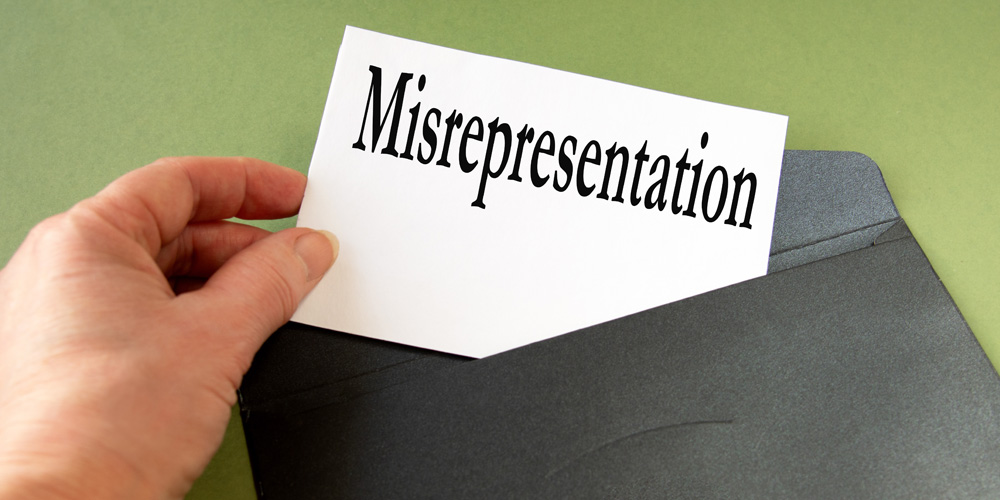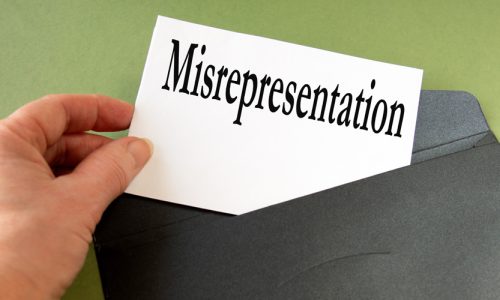Misrepresentation and Immigration Inadmissibility: What You Need to Know Before Applying to Canada

Navigating Canadian immigration rules can feel overwhelming, especially with frequent policy updates. One of the most serious risks applicants face is being found inadmissible due to misrepresentation. Whether intentional or not, providing false or incomplete information can have long-term consequences on your ability to enter or remain in Canada, including but not limited to a five-year ban. It is advised to work closely with Immigration lawyers for inadmissibility to Canada, as professional guidance can help you understand the risks and explore possible remedies.
At Law by Tia Sherene, we understand how devastating these findings can be, and we are here to provide clarity on what misrepresentation means, how it affects immigration applications, and what legal steps may be available.
What Is Misrepresentation in Canadian Immigration Law?
Misrepresentation occurs when an Applicant provides false or incomplete information during the immigration process. This can happen either intentionally or unintentionally. Under Section 40 of Canada’s Immigration and Refugee Protection Act (IRPA), misrepresentation can result in a finding of inadmissibility.
Common examples of misrepresentation include:
- Failing to disclose criminal history
- Providing incorrect employment details
- Omitting details about a previous visa refusal to Canada and other countries
- Submitting forged or altered documents (e.g., educational credentials or proof of funds)
Even if a mistake is accidental—such as misunderstanding a question on a form—the consequences are the same. Immigration officers treat all forms of misrepresentation very seriously.
How Misrepresentation Leads to Inadmissibility
If Immigration, Refugees and Citizenship Canada (IRCC) or the Canada Border Services Agency (CBSA) finds misrepresentation, the outcomes can be severe:
- Refusal of your application (temporary or permanent residency)
- Five-year ban on submitting new immigration applications
- Deportation from Canada if you are already in the country
- Permanent record of inadmissibility, making future applications more difficult
These penalties underscore the need for complete honesty and transparency throughout the immigration process. Whether misrepresentation is intentional or not, the consequences remain the same. Even simple mistakes—such as submitting outdated details or misinterpreting a question on an application—can lead to serious repercussions. For this reason, it is strongly recommended to consult an immigration lawyer for inadmissibility to Canada and to explore the most effective legal options available.
Legal Strategies for Addressing Misrepresentation
If misrepresentation is discovered, there are a few potential options for resolving the issue.
The outcome largely depends on the nature of the misrepresentation, whether it was intentional, and the applicant’s response to the discovery.
- Rectification of Mistakes: If you realize that an error or omission has been made before IRCC identifies it, you may be able to correct the mistake by promptly notifying IRCC and submitting the correct information. Proactive disclosure demonstrates good faith and may prevent a misrepresentation finding.
- Responding to a Procedural Fairness Letter (PFL): If IRCC suspects misrepresentation, they may issue a Procedural Fairness Letter (PFL). This is an opportunity to provide explanations, evidence, or clarification before a final decision is made. A thorough, well-documented response is essential to address IRCC’s concerns and prevent a misrepresentation finding.
- Judicial Review of the decision at the Federal Court of Canada: If IRCC has already made a decision finding misrepresentation, applicants may seek judicial review at the Federal Court of Canada. This process does not re-decide the case but examines whether IRCC’s decision on misrepresentation was reasonable and made according to Canadian law. If the Federal Court determines that the misrepresentation finding was unreasonable, the decision will be set aside.
- Temporary Resident Permit (TRP): For individuals who remain inadmissible but have urgent reasons to enter Canada—such as family emergencies, work obligations, or humanitarian concerns—a Temporary Resident Permit (TRP) may allow temporary entry despite inadmissibility.
- Reapplication After the Ban: A finding of misrepresentation usually carries a five-year ban from reapplying to most immigration programs. Once the ban expires, reapplication is possible, though prior misrepresentation may still influence how authorities assess credibility and admissibility. Therefore, it may be essential to seek immigration advice from a lawyer before reapplying, to ensure the strongest possible case.
The Role of Immigration Inadmissibility Lawyers
Facing a misrepresentation finding can feel isolating, but legal guidance can make a meaningful difference. Experienced Canadian Immigration inadmissibility lawyers can:
- Rectification of Mistakes: A lawyer can guide you in promptly correcting errors before IRCC makes a decision. This includes preparing clear explanations and ensuring that updated information is submitted in the correct format.
- Responding to a Procedural Fairness Letter (PFL): Crafting a strong response to a PFL is often decisive. An immigration lawyer can assess the allegations, gather supporting documentation, and prepare persuasive legal submissions that address IRCC’s concerns.
- Judicial Review at the Federal Court of Canada: If a misrepresentation decision has already been made, a lawyer can file an application for judicial review, develop legal arguments, and represent you before the Federal Court to challenge the decision’s fairness and reasonableness.
- Temporary Resident Permit (TRP): Lawyers can also assist in preparing detailed TRP applications that highlight compelling humanitarian, family, or professional reasons for temporary entry despite inadmissibility.
- Reapplication After the Ban: When the five-year ban expires, an immigration lawyer can help you prepare a strong reapplication. This may include addressing the past misrepresentation directly, providing evidence of rehabilitation or good faith, and ensuring that your application is fully transparent.
By working with an immigration lawyer, you benefit from tailored legal strategies, careful document preparation, and advocacy that increases the chances of a fair review of your case.
Preventing Future Issues with Legal Guidance
The best way to avoid misrepresentation is to take a proactive approach from the start. Working with an immigration lawyer helps ensure that:
- The Applicant understands the legal requirements for immigration applications
- Potential issues are flagged before submission
- Identify common mistakes that could lead to misrepresentation
- Provide guidance on how to address previous refusals or discrepancies in a record, ensuring full transparency with immigration authorities
This preventative guidance helps reduce the risk of mistakes that could lead to inadmissibility findings.
Seek Guidance from The Law Office of Tià Sherene McCalla
Misrepresentation under Canadian immigration law carries serious consequences, but it does not always mark the end of your journey. Understanding your options—and acting quickly—can make a difference in how your case unfolds.
If you are dealing with immigration inadmissibility due to misrepresentation or want to prevent these issues from arising, reach out to experienced immigration inadmissibility lawyers such as The Law Office of Tià Sherene McCalla. We provide clear guidance and dedicated legal support to help you navigate the complexities of Canadian immigration law.






